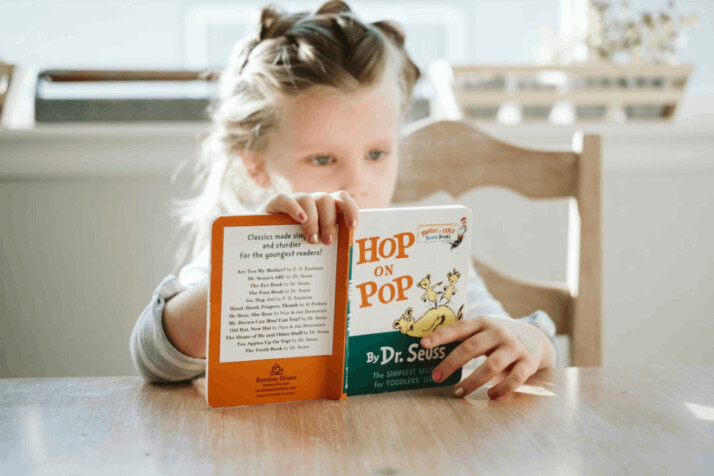It’s crucial to pick the right level of reading for your child because children of different ages have varying reading requirements. To find the right level for your kid, you’ll need to know their grade level and specific reading ability. Here is how to fine-tune your child’s reading level by age and maturity.
What Is a Reading Level?
Reading levels are a thorough method for matching your child’s reading ability with books they can effectively read and comprehend. It is a reliable indicator of a child’s reading development. Your little one is more likely to enjoy reading if they read books that are predominantly at or just above their identified level.
The Reading scale is an education system that helps to assign books, articles, and other material to a specific grade level student. It has two parts: the grade and the number.
The grade represents any level from K, K-2, 3, 4, 5, and more. And the number means how many levels of reading there are in each grade.
Why Are These Levels of Reading Important?
These levels are a way to gauge a student’s degree of decoding and comprehension. This is important because they provide a way for parents and teachers to determine appropriate reading for their students.
When young reader attempts to read a book that is beyond their level of proficiency, they may conclude that reading is too difficult. And this dissatisfaction may lead to a general aversion to reading and literature.
Therefore, understanding the level of reading is vital to your child’s language learning and comprehension.

Understand the Right Reading Level by Age
Children go through each stage of development at a different rate and for varying lengths of time. It is helpful to get advice from a child’s teacher or another reliable adult to determine the appropriate level of reading.
You must support your little reader in the development stage and make reading easy for them. To determine if your kid is reading at the right level, you must understand the reading level by age to help them at home.
Infancy: Below Age 1
Infants start to understand that sounds and gestures convey meaning. Additionally, you’ll notice that they respond when spoken to, and you can direct them to specific people or objects.
They start to vocalize and pat pictures in response to stories and photos. This is the time when these little kids are not readers yet but are learning the concept of language.
Toddlers: Ages 1–3
Typically, toddlers start identifying objects and responding to questions like “Where’s the boy?” regarding characters in books. They can name familiar images and point to named objects.
These children will be found scribbling on papers and finishing sentences they are familiar with. They are also familiar with book titles and can recognize them by the image on the cover. Toddlers usually have a favorite book that they ask to be read repeatedly.
Early Preschool: Age 3
Early preschoolers are children that are 3 years old. They can listen to longer stories out loud and independently explore books. You may also encourage kids to sing the alphabet song with prompts and cues.
They start to recognize the first letter in their name and understand that creating a picture and writing are two separate things. Additionally, you’ll notice that they mimic the act of reading aloud from a book.
Late Preschool (Age 4)
Late preschoolers understand words that rhyme and identify familiar signs and labels in a book or other objects. They can recognize some alphabets and compose their names.
At this age, they can recognize the starting letters of words and match letters to their sounds. They start to comprehend syllables and try developing terms using familiar letters. They are also aware that print is read top to bottom, from left to right.
Kindergarten (Age 5)
Students in kindergarten can match certain spoken and written words in a book and form rhymes. These kids can distinguish between the beginning, end, and medial sounds in short words.
They should be able to recognize and control progressively smaller speech sounds. They can read straightforward terms both alone and in context. Kindergartners can recall the main idea, remember details, and order events.
First and Second Grade (Ages 6–7)
First and second-grade students are between 6-7 years old. You can expect them to read stories and decode familiar terms. Moreover, they can use pictures and context to help pronounce or decode unfamiliar words.
You can guide them to some general usage of punctuations and capitalization. They will correct themselves as they read aloud if they pronounce something incorrectly. They also begin to organize details from start to the end logically.
Second and Third Grade (Ages 7–8)
Children aged 7 or 8 are usually in the second and third grades. They read aloud longer books independently with proper emphasis and expression.
They also begin to comprehend paragraph concepts and apply appropriate punctuation. These children can use the new words and expressions learned and understand the humor in story books. These young readers acquire the skill of revising their work as they develop and present the content of their stories.
Fourth Through Eighth Grade (Ages 9–13)
Comparatively speaking, these students struggle less with reading multiple genres of material, such as poetry, biography, and fiction. They begin to explore narrative, argumentative, and descriptive essays.
They can extract precise information from books and comprehend how various objects relate to one another. These children gain knowledge of literary devices like metaphors and similes.
Conclusion
Each child has unique intellectual requirements. Therefore, what one child needs to learn won’t be the same as what another child requires.
The answer to determining the level of reading for a child is to first identify what a child’s current developmental level is. This article lists the reading level by age and explains the reading comprehension required from each grade level.
Explore All Readability Articles
A Guide to the Fry Readability Graph
If you’re wondering what the Fry readability graph means, you’re in luck. First, a quick introduction. What Is the Fry…
Know the Importance of Flesch Kincaid Grade Level Score
Reading level is one of the most tested educational metrics based on grade-level measurement. The Flesch Kincaid Grade Level Score…
A Guide to Your Child’s DRA Reading Levels Progress
Every child starts out as a beginner in their reading journey. It is necessary to assess their reading ability based…
A Close Reading Guide: Importance & Strategies
With close reading, students can understand the purpose of reading a text. What Is Close Reading? Close reading is utilized…
A Guide to the 5 Components of Reading
Reading is a life skill that kids will carry with them into adulthood. Throughout a child’s reading development, it’s important…
Importance of Second Grade Reading Comprehension
The age of a second-grader is often considered the beginning of their formal education. As such, 2nd grade reading comprehension…
